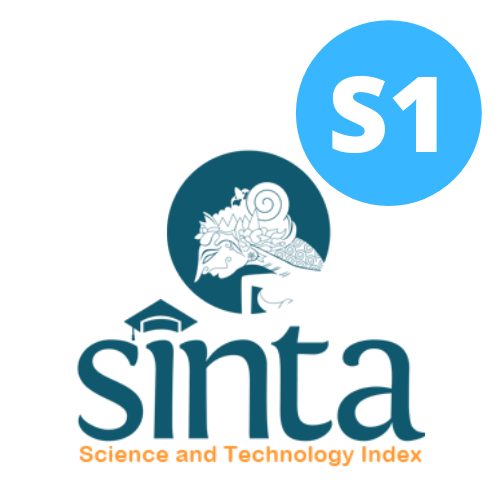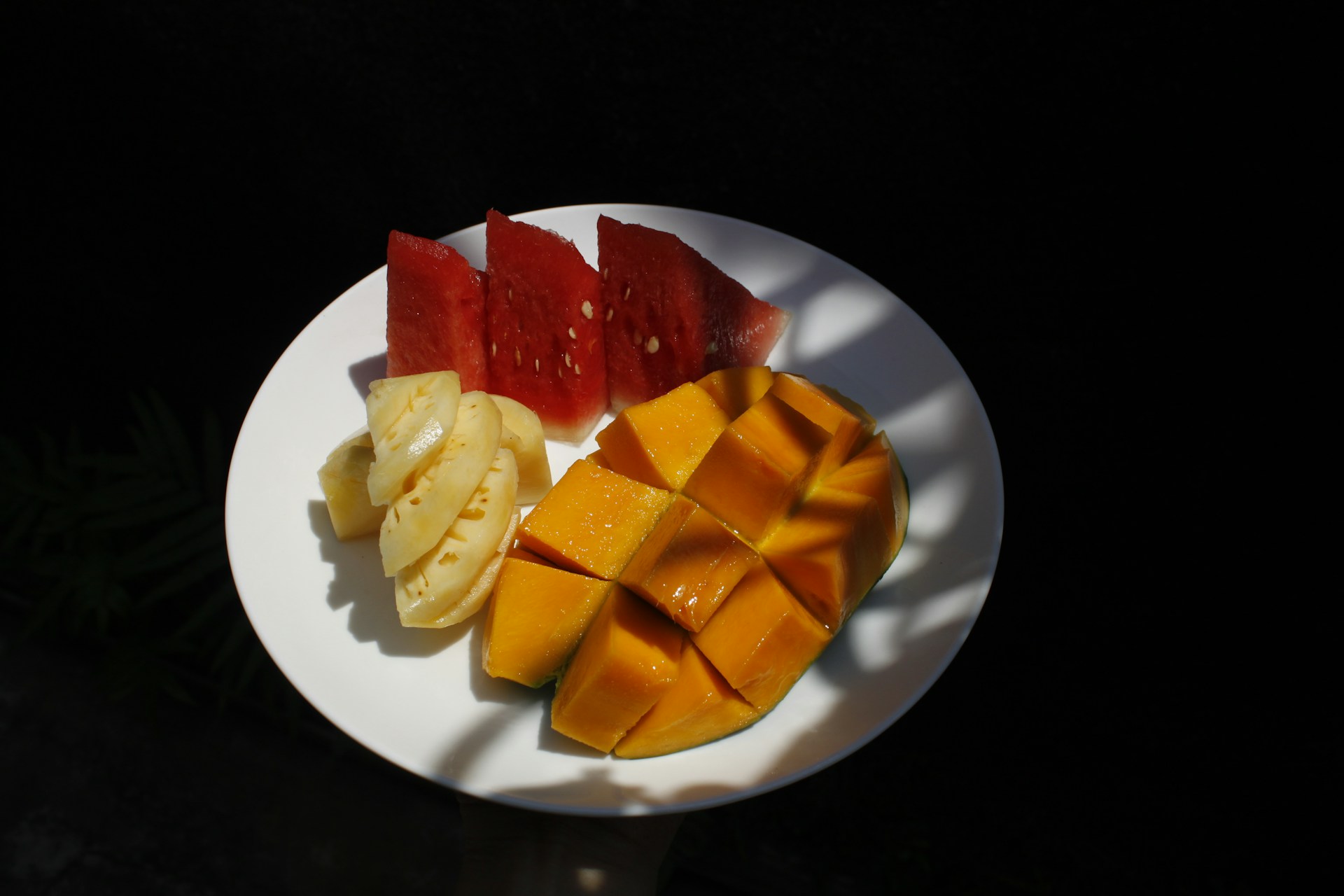Physical and Sensory Characteristics of Soybean and Glucomannan Based Meat Analogue for Obesity Intervention
Karakteristik Fisik dan Sensoris Daging Tiruan Berbasis Kedelai dan Glukomanan untuk Intervensi Obesitas

Downloads
Background: Foods low in calories, low in fat, high in protein and fiber can be an option for treating obesity. Soy protein is high quality and low fat, while glucomannan is a fiber with low energy density. In this research, artificial meat based on soybeans and glucomannan was developed with low calories and fat but high protein and fiber for obesity intervention.
Objectives: This research aims to develop soybean and glucomannan-based meat analogue for obesity interventions and determine the physical and sensory characteristics of soy and glucomannan-based meat analogue.
Methods: This study was an experimental study with a completely randomized design, four treatment proportions (%) of soybean protein isolate-glucomannan (30:0, 29:1, 27:3, and 25:5) and three treatment replications. The data collected included physical test data (water holding capacity and cooking loss), and sensory test data (appearance, texture, aftertaste, and preferences). According to the data category, physical test data were analyzed using Variance Analysis or Kruskal Wallis. Sensory test data were analyzed using analysis of variance followed by the post hoc Duncan Multiple Range Test.
Results: The proportion of soy protein isolate-glucomannan did not affect the water binding capacity and cooking loss. The water binding capacity ranges from 12.44 to 34.61%, and the cooking loss ranges from 2.17 to 4.44%. The sensory score for the appearance, taste, and texture was neither resembling (score 2) nor somewhat resembling (score 3) chicken meat. The proportion of soy protein isolate-glucomannan influences the appearance and texture but does not influence the taste, aftertaste, and level of liking. The aftertaste scores are strong and moderate. The liking score was between dislike and somewhat like.
Conclusions: Meat analogue for obesity intervention can be developed using soybeans and glucomannan. The cooking loss and water-holding capacity of artificial meat are proper, while the sensory characteristics of meat analogue do not yet resemble real meat.
Balitbangkes RI. Laporan Riskesdas 2018 Nasional.pdf. Lembaga Penerbit Balitbangkes (2018).
Singh S, A., Dhanasekaran, D., Ganamurali, N., L, P. & Sabarathinam, S. Junk food-induced obesity- a growing threat to youngsters during the pandemic. Obes. Med. 26, 100364 (2021).
Keleszade, E. et al. A pilot study to assess the effect of a fibre and mineral formulation on satiety and satiation when taken as part of a calorie restriction diet in overweight and obese women. J. Funct. Foods 74, 104157 (2020).
Qin, P., Wang, T. & Luo, Y. A review on plant-based proteins from soybean: Health benefits and soy product development. J. Agric. Food Res. 7, 100265 (2022).
Shen, Y. et al. Effect of adding modified pea protein as functional extender on the physical and sensory properties of beef patties. Lwt 154, 112774 (2022).
Baune, M.-C. et al. Effect of plant protein extrudates on hybrid meatballs – Changes in nutritional composition and sustainability. Futur. Foods 4, 100081 (2021).
Kaleda, A. et al. Physicochemical, textural, and sensorial properties of fibrous meat analogs from oat-pea protein blends extruded at different moistures, temperatures, and screw speeds. Futur. Foods 4, 100092 (2021).
Sun, C., Ge, J., He, J., Gan, R. & Fang, Y. Processing, Quality, Safety, and Acceptance of Meat Analogue Products. Engineering 7, 674–678 (2021).
Jia, W., Curubeto, N., Rodríguez-Alonso, E., Keppler, J. K. & van der Goot, A. J. Rapeseed protein concentrate as a potential ingredient for meat analogues. Innov. Food Sci. Emerg. Technol. 72, 102758 (2021).
Xia, S., Xue, Y., Xue, C., Jiang, X. & Li, J. Structural and rheological properties of meat analogues from Haematococcus pluvialis residue-pea protein by high moisture extrusion. Lwt 154, 112756 (2022).
Chantanuson, R., Nagamine, S., Kobayashi, T. & Nakagawa, K. Preparation of soy protein-based food gels and control of fibrous structure and rheological property by freezing. Food Struct. 32, 100258 (2022).
Chambers, K. F., Day, P. E., Aboufarrag, H. T. & Kroon, P. A. Polyphenol effects on cholesterol metabolism via bile acid biosynthesis, CYP7A1: A review. Nutrients 11, 1–23 (2019).
Munekata, P. E. S. et al. Satiety from healthier and functional foods. Trends Food Sci. Technol. 113, 397–410 (2021).
Maia-Landim, A., Lancho, C., Poblador, M. S., Lancho, J. L. & Ramírez, J. M. Garcinia cambogia and Glucomannan reduce weight, change body composition and ameliorate lipid and glucose blood profiles in overweight/obese patients. J. Herb. Med. 26, (2021).
Mohammadpour, S. et al. Effects of glucomannan supplementation on weight loss in overweight and obese adults: A systematic review and meta-analysis of randomized controlled trials. Obes. Med. 19, 100276 (2020).
Dai, S., Corke, H. & Shah, N. P. Utilization of konjac glucomannan as a fat replacer in low-fat and skimmed yogurt. J. Dairy Sci. 99, 7063–7074 (2016).
Jimenez-Colmenero, F., Cofrades, S., Herrero, A. M., Solas, M. T. & Ruiz-Capillas, C. Konjac gel for use as potential fat analogue for healthier meat product development: Effect of chilled and frozen storage. Food Hydrocoll. 30, 351–357 (2013).
Taghian Dinani, S., Broekema, N. L., Boom, R. & van der Goot, A. J. Investigation potential of hydrocolloids in meat analogue preparation. Food Hydrocoll. 135, 108199 (2023).
Komansilan, S. Pengaruh Penggunaan Beberapa Jenis Filler Terhadap Sifat Fisik Chicken Nugget Ayam Petelur Afkir. Zootec 35, 106 (2015).
Setyaningsih, D., Apriyantono, A. & Sari Puspita, M. Analisis Sensori. (Penerbit IPB Press, 2010).
Azhari, R., D. Oktaviana, G. A. E. Windhary, D. Abidin & Mashur. Potensi daun ashitaba (Angelica keiskei) sebagai sumber fitobiotik dalam pakan terhadap kualitas fisik daging ayam broiler. J. Sangkareang Mataram 5, 10–15 (2019).
Lastri, D. R. & Putra, Y. P. Karakterisasi mutu fisik dan makronutrisi fillet ikan jebung (Abalistes stellaris). Manfish J. 1, 15–20 (2020).
Herawati & Widiarso, B. P. Penjaminan Mutu Bahan Pangan Asal Hewan. (Media Nusa Creative (MNC Publishing), 2021).
Taghian Dinani, S., Charles Carrillo, M. F., Boom, R. & van der Goot, A. J. Quality improvement of plant-based meat alternatives by addition of iota carrageenan to pea protein–wheat gluten blend. Eur. Food Res. Technol. 249, 1637–1654 (2023).
Zahari, I. et al. Development of high-moisture meat analogues with hemp and soy protein using extrusion cooking. Foods 9, 1–13 (2020).
Jayasena, D. D., Ahn, D. U., Nam, K. C. & Jo, C. Flavour chemistry of chicken meat: A review. Asian-Australasian J. Anim. Sci. 26, 732–742 (2013).
Yoo, S. H. & Chang, Y. H. Volatile compound, physicochemical, and antioxidant properties of beany flavor-removed soy protein isolate hydrolyzates obtained from combined high temperature pre-treatment and enzymatic hydrolysis. Prev. Nutr. Food Sci. 21, 338–347 (2016).
Baune, M.-C. et al. Meat hybrids–An assessment of sensorial aspects, consumer acceptance, and nutritional properties. Front. Nutr. 10, (2023).
Copyright (c) 2024 Amerta Nutrition

This work is licensed under a Creative Commons Attribution-ShareAlike 4.0 International License.
AMERTA NUTR by Unair is licensed under a Creative Commons Attribution-ShareAlike 4.0 International License.
1. The journal allows the author to hold the copyright of the article without restrictions.
2. The journal allows the author(s) to retain publishing rights without restrictions
3. The legal formal aspect of journal publication accessibility refers to Creative Commons Attribution Share-Alike (CC BY-SA).
4. The Creative Commons Attribution Share-Alike (CC BY-SA) license allows re-distribution and re-use of a licensed work on the conditions that the creator is appropriately credited and that any derivative work is made available under "the same, similar or a compatible license”. Other than the conditions mentioned above, the editorial board is not responsible for copyright violation.












































